Hawaiian Electric, Operating in Hawaii’s Best Interests?
Energy Alarms
Hawaii Island residents awoke to alarming news in February, and then again in March. Hawaiian Electric (aka HELCO) warned customers that the utility’s electricity services (which most County residents take for granted) would be facing rolling service blackouts and potential service disruptions of one or more hours in duration – and to be prepared for a loss in service.
Hawaiian Electric’s combustion turbine CT-1 unexpectedly tripped offline kicking off a local power crisis in the making. In the meantime, Hawaiian Electric’s Hill Plant Unit No. 5, Keahole CT-5, and Puna Steam Plant were unavailable due to maintenance and repairs – following a script for failure, the Feb-March service disruptions were one more example of a perfect storm, increasingly common within Hawaiian Electric’s service territories.
Local headlines followed; “Hawaiian Electric initiates rolling outages”, and in the following month, “Hawaiian Electric asking Big Island customers to conserve power due to down combustion power plants.”
The utility’s service reliability weaknesses are several, but it boils down to a primary dependency on combustion (firm) power plants designed to wastefully generate electricity at high-to-maximum energy levels around the clock, regardless of consumer demand. These firm power plants are combustion-based, meaning they produce power by burning various polluting source fuels. Regardless of a “renewable energy” label some of the utility’s plant operators promote who are not directly burning fossil fuels, the fuels these plants typically burn is neither sustainable or clean energy, and has recent history indicates, proving increasingly unreliable.
Hawaii Island’s Utility Experience
In the February service disruption, the first domino to fall was independent power producer Hamakua Energy, which unexpectedly tripped offline late in the afternoon of the 13th. The plant’s primary fuel is naphtha, considered the dirtiest of petrochemical fuels. Its composition and properties can vary significantly depending on its source and refining process. Naphtha’s higher content of aromatic and unsaturated hydrocarbons tends to produce more soot and emissions when burned, as is the case with Hamakua Energy. Optimizing naphtha as a fuel requires extensive purification and treatment to remove contaminants through extensive processes of filtration and coalescence.
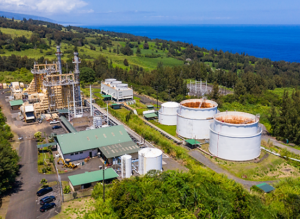
In 2019, Hamakua partnered with Pacific Biodiesel to start using locally sourced biodiesel fuel. In this 90/10 fuel mix, bio-diesel is used to top-off the plant’s primary fuel, naphtha. The result is a slight reduction in the plant’s otherwise sole reliance on this imported and dirty fossil fuel. The flimsy PR case for this arrangement was billed as Hawaii’s energy independence and sustainability goals being fulfilled by Hamakua Energy’s contribution and marginally cleaned up through a minor addition of locally-produced biodiesel designed to reduce furnace fouling, emissions, and maintenance costs. The effectiveness of biodiesel added in this case has been described as lipstick-on-a-pig. Hawaii’s dirty energy power brokers point to Hamakua as the poster child for state-funded clean power incentives, funded by both taxpayers and ratepayers.
Optimize naphtha, as is the case with Hamakua, requires extensive purification and treatment to remove contaminants through processes like filtration and coalescence, an extensive pre-burn process promoted to reduce furnace fouling, emissions, and maintenance costs for the Hamakua Energy combustion power plant.
The February 2024 Hamakua Energy plant failure was attributed to mechanical issues, common with combustion power plants. Hamakua Energy (owned by Pacific Current), exclusively sells its power to HELCO, and through a state sanctioned power purchase agreement that runs until 2030. Hamakua is an example of firm energy on shaky ground.
Firm Energy, a not so firm assumption
The myth of so-called “firm power” combustion plants is twofold; first, they are essential to the fulfillment of Hawaii’s 24×7 electricity needs, and such, they are considered “firm power” as in always available, always on.
Hawaii Island’s largest firm power utility supplier went offline due to “significant mechanical issues”. Considering the operational complexity and costs to ratepayers and the planet, combustion power plants are subject to frequent operating failures and high maintenance cycles. As these power plants age, their complex operating designs become increasingly unreliable energy sources to operate. Their costly-to-maintain 24×7 operations are designed as essential grid power providers, but this role is threatened by improved and lower cost energy alternatives going well beyond the traditional operating role of firm combustion plants, and at lower cost. The trend is especially true for Hawaii as these plants approach the end of their operating life and are increasingly facing environmental and climate mitigation rules they are ill equipped to fulfill.
Hawaiian Electric’s overreliance on so-called “firm” energy suppliers are the by-product of last century grid power planning, assumptions, technologies, and operating practices increasingly out of synch with today’s changing climate realities, clean energy technology alternatives and replacement opportunities. Presently, it is a house of cards as recent utility-connected events on Maui, Oahu, and Hawaii Island have demonstrated.
The traditional definition of Firm Energy is the combination of a combustion power generating plant continuously operating at high rates of steady state energy production. Hawaiian Electric’s fragile power infrastructure and primary reliance on outdated combustion power plants sets the stage for operating circumstances leading to the Big Island service disruptions of February and March. In the case of the February 2024 Hamakua Energy plant failure, the plant normally generates 60 megawatts or nearly one-third of the typical peak demand of 180 megawatts on the entire island, further demonstrating the utilities’ over reliance on energy from a single supply point of potential failure.
Puna Geothermal Venture (PGV) is another technology example of Firm Energy and where Geothermal power intersect. The highly disruptive Kilauea eruption of 2018 put PGV out of the power generation business for several years. PGV not only failed to meet its original power reliability expectations, but the RPS power commitment it made to the utility, the PUC, and ratepayers. Over the following 5 five years (since 2018 and the Kilauea eruption) PGV has failed to meet production commitments to Hawaiian Electric. PGV’s highly-reduced power capacity today and since the eruption has peaked at 68% of its original agreement 25 megawatts of its earlier 38 MW power generation commitment to the utility.
PGV’s failings is one more bad bet example on this unique form of energy the utility has made on behalf of ratepayers. Utility energy choices are guided by a large and flexible plate of clean and dirty renewable combustion energy options which are served up by the state in what is increasing an outdated set of RPS rules guiding Hawaii’s energy future. While the utility’s poor power choices that rely on ratepayer bailouts of combustion options, also continue to produce rising energy costs. Couple to these rising costs are an increasing track record of power disruptions and greater power insecurity for Hawaii.
Hawaii’s state PUC must reconcile its representation of the public’s interest with the state’s renewable energy 2045 mandate, and in doing so, may find itself in the role of helping guide the state’s largest utility towards better energy supply choices, more winners and less ratepayer-funded losers. It’s reasonable to assume the PUC’s role could be more proactive in the fulfillment of the utility’s fundiacary responsibilities to the public, and its operating role as a legally sanctioned energy monopoly. The state’s present energy course, aside from good intentions, is one in which the utility decides, leaving most of Hawaii in a state of greater energy insecurity. Practice and policy which so far has failed to meet the state’s promised transition to clean energy economy.
Here Comes the Sun
Waikoloa Solar + Storage Community Energy Farm
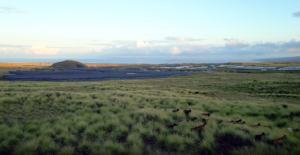
Clean (zero emissions energy) in the form of wind and solar energy plants and in combination with battery and other energy storage options are now presenting highly competitive firm energy market alternatives to traditional, and costly biomass, WTE, and / or fossil-fueled combustion grid power options plants.
Beyond the obvious climate and cost benefits, these newer clean power + energy storage offer the same on-demand power provisioning benefits of traditional combustion plants, without the overhead and operating risks traditionally associated with combustion plants.
An added benefit to utilities engaged in 21st-century power provisioning is challenging the entire idea of traditional firm energy operations, as energy-wasteful and highly inefficient.
Grid-scale battery power storage releases only the power needed instantly to load balance grid demands with power supplies. Combustion plants simply produce power around the clock at fixed levels and then dump excess power not required to meet fluctuating consumer demand.
On the mainland, and perhaps Hawaii in the near future, today’s evolving and the variable clean energy (Solar /Wind) landscape with 24×7 load balancing storage will increasingly be beyond competitive and the least costly energy option in comparison to 20th century grid-scale energy options employed today, as exemplified today by obsolete combustion energy power plants supporting Hawaiian Electric’s overweighted investments in yesterday’s power generation.
The recent service activation of Hawaiian Electric’s AES Solar power plant in Waikoloa is an exception to the utility’s operating norms. The solar plant features a large array of panels connected to ample battery storage and represents a shining example of clean energy on-demand serving Hawaii Island ratepayers. The zero emissions energy power plant is also an excellent example of the benefits for 21st century clean power options at utility scale, and has proven to deliver to both ratepayers and the utility unprecedented energy operating savings.
With unsurpassed reliability and low operating cost, the AES plant produces (30 MW) for less cost to ratepayers, defying conventional ratepayer experience with an actual lowering of utility rates against a historic backdrop of ever increasing utility rates. Although Hawaiian Electric is reluctant to admit it, the AES solar plant also mitigated the overall recent power failure impacts on customers of the utility’s two most recent combustion plant power supply failures.
Questions increasingly being asked
Why doesn’t Hawaiian Electric modernize its energy technology thinking, planning, and prioritize more effective and efficient AES-like solar-storage energy supply options? Such planning would require the utility to consider retiring early some its costly and increasingly unreliable firm energy combustion supplier agreements, something unlikely based on the utility’s operating track record and priorities. The short answer to this question is more or less that ratepayers are footing the bill, not the utility, which presently has little incentive in executing needed 21st century energy reforms.
The utility’s public talking points, mostly amplified by a few powerful political agents in the state Senate is simple enough; we need firm power plants because firm power is our only practical option exiting our fossil fuel grid dependencies. The utility-inspired public misinformation campaign reasons that battery storage is only good for 2 and 4-hour durations (false), and that the wasteful status quo of 24×7 full-throttle firm power combustion power plants are the state’s only way forward. These talking points supporting the utility present track record and trajectory are false assumptions and full of half-truths, but serve as convenient public talking points.
Utility grid-scale energy storage is not limited by today’s battery technology, but is actually dictated by scale and the utility’s RFP requirements. The more batteries, the greater storage capacity, and the greater power duration to load balance the grid, day or night – without pollution and with greater reliability. Battery storage requirements and limitations are dictated by the utility, not limits in technology of performance. Larger battery deployments equal longer on-demand power storage, available as needed day or night, and without technology limitations.
Utilities tend to limit the scale of RFP storage requests for a variety of reasons which have less to do with the technology transformation opportunities, more to do with business and profit priorities. It is true requesting smaller battery storage deployments is cheaper, but that misses the point entirely in the larger cost and performance designed to serve ratepayers interests.
Clean, Low Cost Energy take a back seat to Hawaiian Electric’s energy priorities
Energy storage deployment in 2023 set a record globally and more than doubled in the U.S., according to Bloomberg NEF’s Energy Storage Market Outlook. The report credited the rapid growth in energy storage to government targets and incentives, as well as the growing need to shift energy from the time of generation to times of peak demand. In addition to improving overall grid reliability, using energy storage to “shave” peak demand can also help insulate utilities from volatility in the pricing of electricity. not necessarily a problem in Hawaii’s insulated energy market, but helpful nonetheless.
There is an increasing drumbeat within our island communities, one which cherry-picks energy facts regarding Hawaii’s transition to clean energy vs. the status quo of burning fossil fuels, and one which favors complex and expensive combustion energy options in a variety of forms; organic and inorganic fuel options from green waste to food waste, to trees and to WTE toxic and non-toxic trash burning to produce power. In all cases, these so-called renewable energy fuels must first be burned in a variety of steps to create steam, which in turn spins turbines, and then finally electricity destined for the grid.
Compared to solar (without any moving parts, zero air and climate pollution, and low maintenance) and a source of unparalleled clean energy source that is free-to-all (the Sun), and wind turbines which have few moving parts and a low level of periodic maintenance compared to the complexities of combustion plant operations with their extensive and expensive maintenance requirements it should be an easy choice for utilities seeking greater cost performance and reliability. In short, solar and wind in combination with today’s energy storage options offer ratepayers and utilities alike greater service reliability at a lower cost – period.
Today’s energy storage technologies serve a crucial role balancing electricity supply with demand
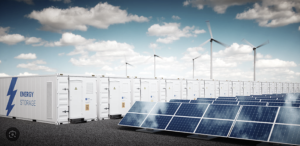
“Combustion is the problem – when you’re continuing to burn something, that’s not solving the problem,” says Prof Mark Jacobson. The Stanford University academic has a compelling pitch: the world can rapidly get 100% of its energy from clean and renewable sources with “no miracles needed”.
Wind, water and solar can provide plentiful and cheap power, he argues, ending the carbon emissions driving the climate crisis, slashing deadly air pollution and ensuring energy security.
Expanding storage options are no longer limited to batteries and pumped hydroelectric, as compressed air, flywheels, and thermal storage systems enter various stages of commercialization.
Altogether, an expanding base of energy storage technology options are enabling innovative utilities to store low cost solar and wind excess electricity during periods of low demand and match peak production for later release in the fulfillment of on demand consumer power requirements.
Utility scale battery storage technology is not limited by technology, rather by the scale of its application in augmenting and replacing higher cost and higher risk firm combustion energy options.

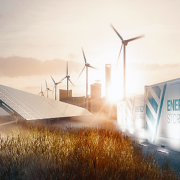
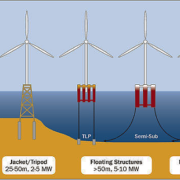
 Hawaii’s activists pushing back against clean energy developments, in this case, have an audience that is listening, the Honolulu City Council. Presently the Council has three proposals being considered designed to protect communities from the placement of large wind energy projects too close to their backyards. The three bills range in project set back requirements from 2 to 5 miles from subdivisions, schools, and other populated developments. A reasonable solution, at least by some standards.
Hawaii’s activists pushing back against clean energy developments, in this case, have an audience that is listening, the Honolulu City Council. Presently the Council has three proposals being considered designed to protect communities from the placement of large wind energy projects too close to their backyards. The three bills range in project set back requirements from 2 to 5 miles from subdivisions, schools, and other populated developments. A reasonable solution, at least by some standards.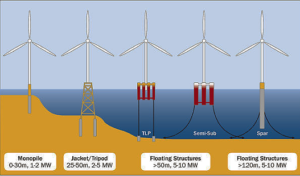 Offshore wind has the potential to deliver large amounts of clean, renewable energy to fulfill the electrical needs of cities along U.S. coastlines and Hawaii’s mid-Pacific location. Under conditions that foster offshore wind utilization, the National Renewable Energy Laboratory estimates that the
Offshore wind has the potential to deliver large amounts of clean, renewable energy to fulfill the electrical needs of cities along U.S. coastlines and Hawaii’s mid-Pacific location. Under conditions that foster offshore wind utilization, the National Renewable Energy Laboratory estimates that the 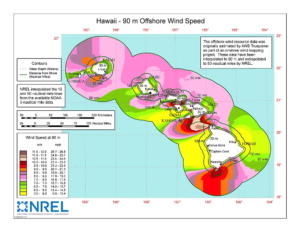
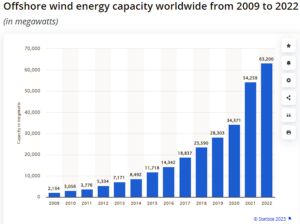 Deepwater wind turbine installations, more specifically, floating offshore wind energy facilities, also known as OWFs, and which are presently deployed are yielding more and more data that support previously assumptions of minimal effects on the marine environment from wind turbines. Off-shore wind turbine installations can also be installed beyond line-of-sight from the shoreline, aka over-the-Horizon installations which have no social impacts in terms of citing and view and minimal marine impact.
Deepwater wind turbine installations, more specifically, floating offshore wind energy facilities, also known as OWFs, and which are presently deployed are yielding more and more data that support previously assumptions of minimal effects on the marine environment from wind turbines. Off-shore wind turbine installations can also be installed beyond line-of-sight from the shoreline, aka over-the-Horizon installations which have no social impacts in terms of citing and view and minimal marine impact.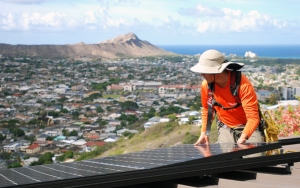 For the past 10 years, the utility’s transition decisions to renewable energy have been notable, not so much in terms of actions, but in overall inaction. The system has historically worked well, for the most part, but time, technology, and necessity have turned obsolete utility operating assumptions on their head.
For the past 10 years, the utility’s transition decisions to renewable energy have been notable, not so much in terms of actions, but in overall inaction. The system has historically worked well, for the most part, but time, technology, and necessity have turned obsolete utility operating assumptions on their head.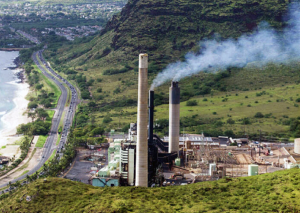 The utility’s focus on preserving its past stranglehold on electricity production and delivery is already endangered as an increasing number of households and businesses who are taking control of their energy destiny by adopting rooftop solar and battery storage. This consumer trend is driven by several factors beyond cost and energy savings, increasing energy security is a major factor in this transition, reducing grid power essentially to a backup energy source. Efficiency is another major factor favoring this cost-saving and energy-resiliency move by consumers.
The utility’s focus on preserving its past stranglehold on electricity production and delivery is already endangered as an increasing number of households and businesses who are taking control of their energy destiny by adopting rooftop solar and battery storage. This consumer trend is driven by several factors beyond cost and energy savings, increasing energy security is a major factor in this transition, reducing grid power essentially to a backup energy source. Efficiency is another major factor favoring this cost-saving and energy-resiliency move by consumers. In Hawaiian Electric’s own words… “In 2022, solar power provided about 17% of Hawaii’s total electricity, primarily from small-scale, customer-sited solar power generation that is the 10th-highest among the states.”
In Hawaiian Electric’s own words… “In 2022, solar power provided about 17% of Hawaii’s total electricity, primarily from small-scale, customer-sited solar power generation that is the 10th-highest among the states.” 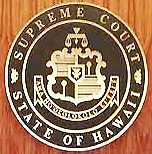
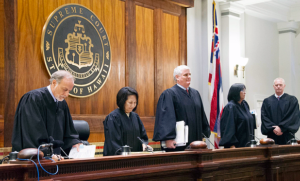 The recent legal saga of Hu Honua versus Hawaii has been notable and was highlighted by insightful remarks during the hearing before the state Supreme Court. Justice Mike Wilson noted that the Hawaii State Legislature has declared a Climate Emergency and has since enacted a decarbonization law with strict new targets, further complicating Hu Honua’s viability, and the state PUC, in presenting the public and ratepayer interests, is required to review power purchase agreements in light of the new legislative changes.
The recent legal saga of Hu Honua versus Hawaii has been notable and was highlighted by insightful remarks during the hearing before the state Supreme Court. Justice Mike Wilson noted that the Hawaii State Legislature has declared a Climate Emergency and has since enacted a decarbonization law with strict new targets, further complicating Hu Honua’s viability, and the state PUC, in presenting the public and ratepayer interests, is required to review power purchase agreements in light of the new legislative changes.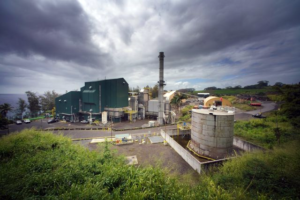 The Hu Honua attorney went on to make a veiled (threat) reference to vested property rights, but pulled back when pressed by the Court, by simply replying “…that is a discussion for another day.” It was an ugly moment. The implication was clear to the Court, Hu Honua sees the case far from finished, and may initiate further litigation in what appears to many as a forever legal battle that Hu Honua has already lost.
The Hu Honua attorney went on to make a veiled (threat) reference to vested property rights, but pulled back when pressed by the Court, by simply replying “…that is a discussion for another day.” It was an ugly moment. The implication was clear to the Court, Hu Honua sees the case far from finished, and may initiate further litigation in what appears to many as a forever legal battle that Hu Honua has already lost.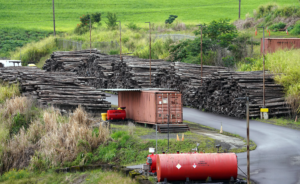 Hu Honua also failed to include emissions from harvesting, transporting, or chipping the fuel. Even the Supreme Court justices picked up on Hu Honua taking credit for emissions after the 2045 deadline for 100% renewables which hugely cheats the numbers. Given the new state law on decarbonization, the PUC is required to go beyond such a flawed analysis.
Hu Honua also failed to include emissions from harvesting, transporting, or chipping the fuel. Even the Supreme Court justices picked up on Hu Honua taking credit for emissions after the 2045 deadline for 100% renewables which hugely cheats the numbers. Given the new state law on decarbonization, the PUC is required to go beyond such a flawed analysis.



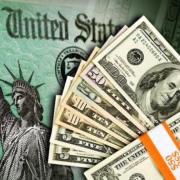
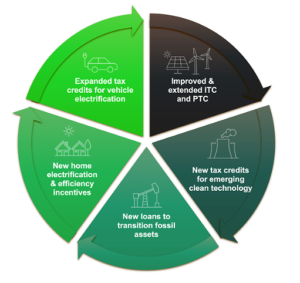 The Inflation Reduction Act is more than another Federal economic assistance program. It represents a sweeping national policy change that recognizes and seeks to address the realities of human-caused global heating consequences on America and the world. It is the fulfillment of what has been in the political arena, decades of climate denial and unfilled mitigation measures.
The Inflation Reduction Act is more than another Federal economic assistance program. It represents a sweeping national policy change that recognizes and seeks to address the realities of human-caused global heating consequences on America and the world. It is the fulfillment of what has been in the political arena, decades of climate denial and unfilled mitigation measures.
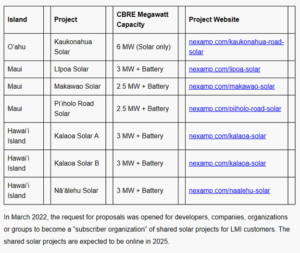
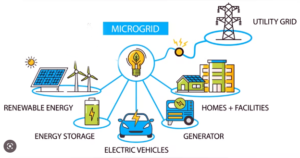
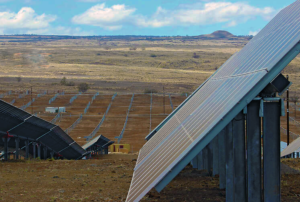 The Waikoloa project broke ground in April 2021, with photovoltaic solar panels and battery storage system installations began in late 2021, with solar panels and batteries now fully installed and under ongoing testing of the facility. The AES Waikoloa Solar + Storage project is presently being tested up to 85% of its capacity,
The Waikoloa project broke ground in April 2021, with photovoltaic solar panels and battery storage system installations began in late 2021, with solar panels and batteries now fully installed and under ongoing testing of the facility. The AES Waikoloa Solar + Storage project is presently being tested up to 85% of its capacity,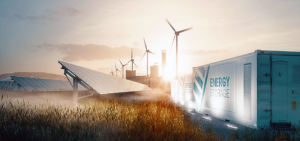 A popular, but ill-informed political argument during this past legislative session against utility-scale solar, wind with batteries serving in the role of firm energy is that they intermittent energy sources with batteries are limited to four (4) hours energy reserves. This statement has become the mantra of some ill-informed Hawaii state lawmakers. The statement is half right, and all wrong at the same time. The plain truth is battery storage limitations in the form of firm energy applications are defined by scale and cost, not technology limitations. Like your cell phone or electric vehicle, the bigger the battery the greater the stored energy and the longer the charge.
A popular, but ill-informed political argument during this past legislative session against utility-scale solar, wind with batteries serving in the role of firm energy is that they intermittent energy sources with batteries are limited to four (4) hours energy reserves. This statement has become the mantra of some ill-informed Hawaii state lawmakers. The statement is half right, and all wrong at the same time. The plain truth is battery storage limitations in the form of firm energy applications are defined by scale and cost, not technology limitations. Like your cell phone or electric vehicle, the bigger the battery the greater the stored energy and the longer the charge.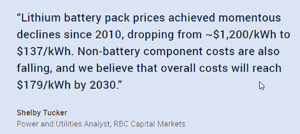 Change is in the Air
Change is in the Air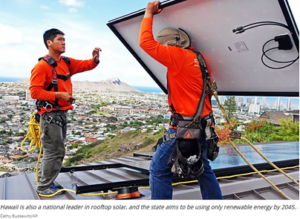 The state’s largest power monopoly reasoned (to this day) took the popular utility view to this day that its customers who generate their own electricity are competitors not customers and that they represent a threat to profits when they operate in the role of power producer rather simply surrendering themselves to being fully indentured power consumers.
The state’s largest power monopoly reasoned (to this day) took the popular utility view to this day that its customers who generate their own electricity are competitors not customers and that they represent a threat to profits when they operate in the role of power producer rather simply surrendering themselves to being fully indentured power consumers. That was then, energy technology advances today, especially those coupled to commercialization have since delivered a range of intelligent battery management systems options to rooftop solar homeowners and businesses which did not exist just 4 years earlier. This same battery storage tech also developed into utility-scale solutions from Hawaii Island-to-Kauai, and represent an ever increasing component in new utility deployments of renewable energy projects. And the role for battery options does not end there, but also as firm energy augmentation to the grid.
That was then, energy technology advances today, especially those coupled to commercialization have since delivered a range of intelligent battery management systems options to rooftop solar homeowners and businesses which did not exist just 4 years earlier. This same battery storage tech also developed into utility-scale solutions from Hawaii Island-to-Kauai, and represent an ever increasing component in new utility deployments of renewable energy projects. And the role for battery options does not end there, but also as firm energy augmentation to the grid.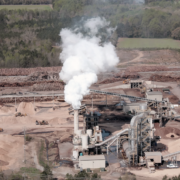
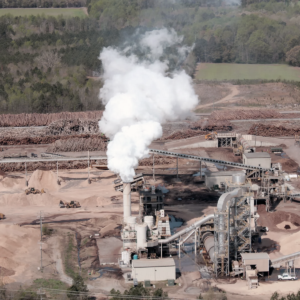 (biomass powerplant, trees as fuel example)
(biomass powerplant, trees as fuel example)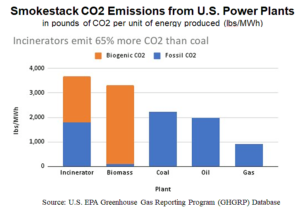 Biomass was originally sold as a source of renewable energy that could help improve U.S. energy security, spur rural economic development, and reduce greenhouse gas (GHG) emissions. The industry was intended to increase energy production from non-food feedstocks such as municipal solid waste, perennial grasses, and forest and agriculture residues such as corn stalks and leaves.
Biomass was originally sold as a source of renewable energy that could help improve U.S. energy security, spur rural economic development, and reduce greenhouse gas (GHG) emissions. The industry was intended to increase energy production from non-food feedstocks such as municipal solid waste, perennial grasses, and forest and agriculture residues such as corn stalks and leaves.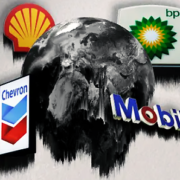
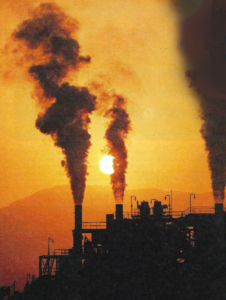 The world’s biggest fossil fuel firms are quietly planning scores of “carbon bomb” oil and gas projects that would drive the climate past internationally agreed temperature limits with catastrophic global impacts for all humanity.
The world’s biggest fossil fuel firms are quietly planning scores of “carbon bomb” oil and gas projects that would drive the climate past internationally agreed temperature limits with catastrophic global impacts for all humanity.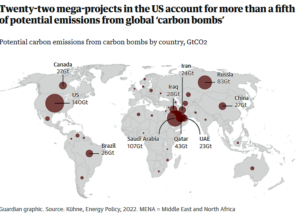 The world’s scientists agree the planet is in deep trouble. In August, Guterres reacted strongly to a stark report by the Intergovernmental Panel on Climate Change, the world’s leading authority on climate science. “The IPCC report is a code red for humanity,” he said.
The world’s scientists agree the planet is in deep trouble. In August, Guterres reacted strongly to a stark report by the Intergovernmental Panel on Climate Change, the world’s leading authority on climate science. “The IPCC report is a code red for humanity,” he said.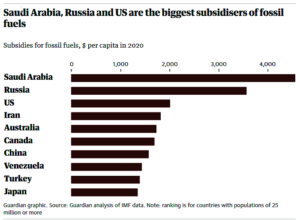 Data obtained by the Guardian from the think tank Carbon Tracker shows a dozen of the world’s biggest companies are on track to commit a collective $387 million dollars a day of capital expenditure to exploiting oil and gas fields through to 2030. A significant portion of this capital outlay is for maintaining existing projects – some oil and gas will still be needed as the world weans itself off fossil fuels –the exact amount is not publicly available.
Data obtained by the Guardian from the think tank Carbon Tracker shows a dozen of the world’s biggest companies are on track to commit a collective $387 million dollars a day of capital expenditure to exploiting oil and gas fields through to 2030. A significant portion of this capital outlay is for maintaining existing projects – some oil and gas will still be needed as the world weans itself off fossil fuels –the exact amount is not publicly available.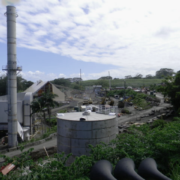
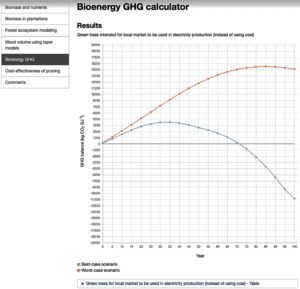 The Canadian government website allows designation of speed of growth of the trees and the distance of transport of harvested trees to the power generating facility. Factoring ‘fast growing trees’ and 50 kilometers (30 miles) average transport (Pahala, Waiakea Mauka and Waipio rim to Pepe’ekeo) this Calculator shows that,
The Canadian government website allows designation of speed of growth of the trees and the distance of transport of harvested trees to the power generating facility. Factoring ‘fast growing trees’ and 50 kilometers (30 miles) average transport (Pahala, Waiakea Mauka and Waipio rim to Pepe’ekeo) this Calculator shows that,